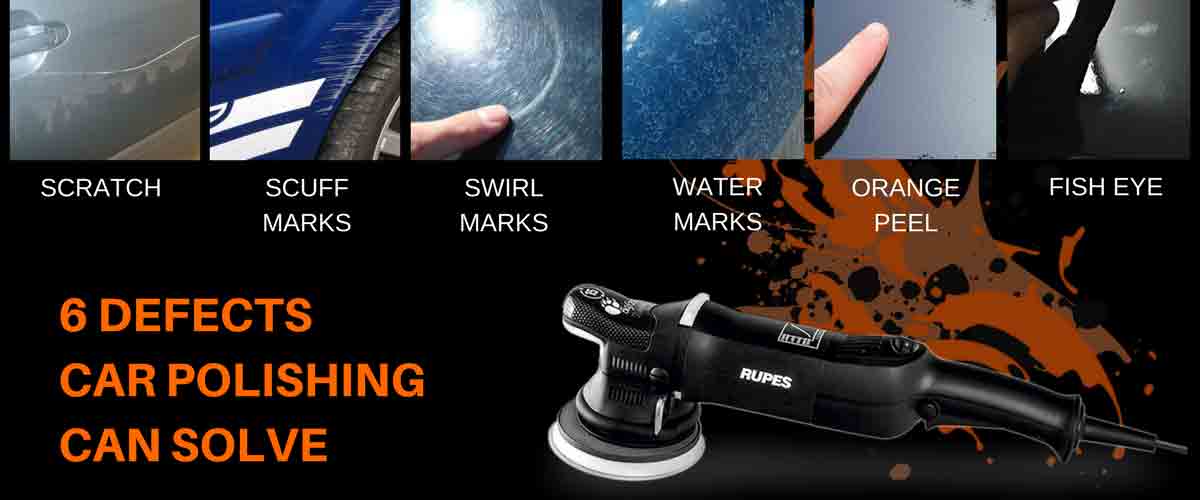6 defects that car polishing can solve

In a perfect world, you wouldn’t need to polish your car’s paint. Cleaning and waxing is all that’s really necessary to protect and beautify your car’s finish. Unfortunately, we don’t live in a perfect world. Your car’s paint is bombarded by contaminants and assaulted by foreign objects every day.
Many people believe that cars come off the assembly line with perfect paint. That’s far from the case. There are many conditions that cause minor paint flaws requiring additional finishing work. Dust nibs (small particles that land in the paint while it is still wet) are a good example. Most car manufacturers take care of these problems at the factory using abrasive finishing materials.
Here’s a general rule to follow. If a scratch or other flaw can be felt with your fingernail, it’s too deep to be completely removed through polishing. That’s not to say that polishing won’t help hide the flaw, it will. If scratches run too deep into the clear coat, polishing cannot fix the problem. However, polishing a deep scratch will hide or lessen the appearance of the problem.
Matt finishes have the same basic rules. You should not remove more than 50% of the top coat (colour coat) finish when repairing a scratch or other paint flaws.
It is important to understand how a polish can be used to “hide” scratches and other micro marring. Scratches have hard edges that run at a 30 to 60 degree downward slope. It is the hard edge and angle of a scratch that creates a perfect opportunity for light reflection. It is this reflection that enhances the visibility of the scratch. A good polish rounds the edges of scratches, reducing reflection.
6 Defects that car polish can solve:
Scratches
Surface abrasions that do not extend past the first 25% of top coat material can be fully repaired by polishing. Deeper scratches can be improved as long as they do not fully penetrate the color coat into the primer.
Scuffs and rub marks
Scuffs are broad, shallow surface abrasions that are easily repaired by polishing. Rub marks are commonly caused by shoe heels (getting in and out of the car) or the bumpers of other cars. The rub mark is generally a transfer of rubber or other vinyl material to the paint surface. Rub marks are easily removed by compounding and polishing.
Swirl Mark
Micro marring, also known as swirl marks and spider webbing, means very small scratches in the paint’s surface. Micro marring is created by machine compounding and in everyday use and maintenance of the vehicle. Micro marring is easily removed by compounding and polishing.
Etching
Paint etching is a common problem caused by hard water (tap water) or acidic water (acid rain). Bird droppings are another common cause of paint etching. Depending on the severity of the etching, polishing will repair or lessen the appearance of etched spots.
Orange peel
When a car is painted, the paint is applied at a consistency and thickness that allows the paint to flow (briefly) and level. If the paint is applied too heavily, sags and runs will result. If applied too thinly, the paint does not properly flow and level, causing an uneven surface called orange peel. If the orange peel is not severe, abrasives can be used to level and glaze the finish to match the rest of the vehicle.
Fish eyes
The is is an eye-like mark on the paint surface resulting from contaminated air in the paint booth or area.
EA Detailer is Singapore Best Auto Detailer, we have served more than 2,500 car drivers since 2014.
To make an enquiry about EA Detailer car detailing services, send us an enquiry today,
